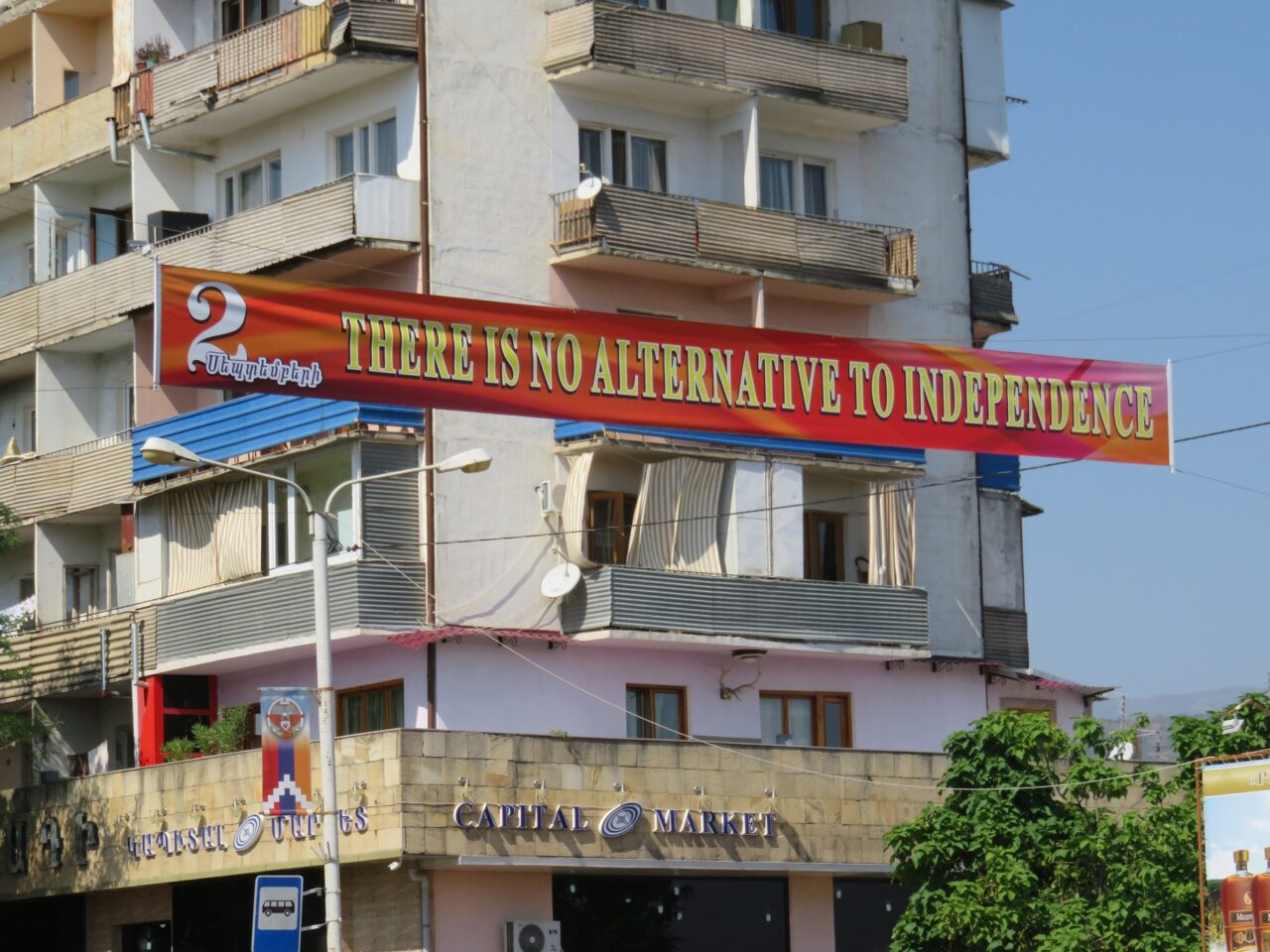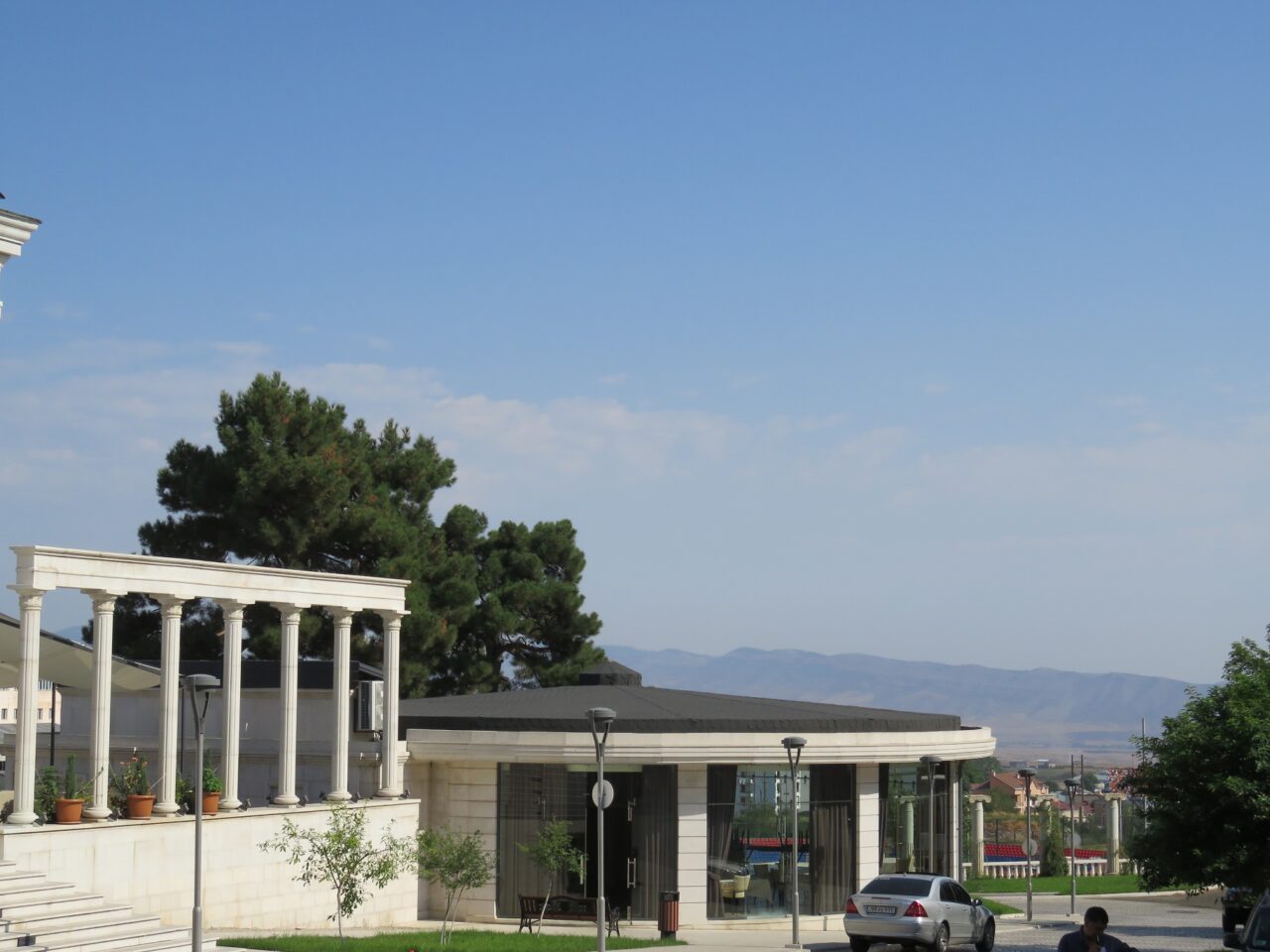“There is no Alternative to Freedom” was a banner prominently displayed on an apartment building in Stepanakert, of the Armenian Republic of Artsakh during my 2018 trip. I went to Artsakh with the Holy Martyrs Apostolic Church of Bayside as part of a “Pilgrimage to Armenia” with Rev. FR. Dr. Abraham Malkhasyan, President Aram Ciamician, organizer in coordination with the Fund for Armenian Relief (FAR). I had no concept of the danger with Azerbaijan or the fact I was in a possible war zone. A pilgrimage member said, “we are ready for war and will protect Armenia.” This is my concept of having a fun trip in the summer? I went for culture, to understand my Byzantine/Hellenic heritage that is tied with Armenia, our Eastern Christian brothers, the fighters of Hellenism as rulers of the Byzantine Empire.
On Sunday morning, September 27th, alerts were broadcast on Greek News that Armenia was attacked on the borders by Azerbaijan. Unexpected. Artsakh (Karabakh) is an integral part of historic Armenia. On December 10, 1991 NK population declared the establishment of the Nagorno Karabakh Republic (NKR) by plebiscite, which fully complies with both international law norms and the letter and spirit of the USSR laws of that time. Thus, on the territory of the former Azerbaijani SSR two equal state formations were created – Nagorno-Karabakh Republic and the Republic of Azerbaijan. In Nagorno-Karabakh and surrounding areas populated by Armenians the policy pursued by Azerbaijani authorities turned into overt aggression and large scale military actions against the Republic of Nagorno-Karabakh, which resulted in tens of thousands dead and caused considerable material damage…. In May 1994 Azerbaijan, Nagorno-Karabakh and Armenia signed a ceasefire, which, despite violations, is still effective.” Until Sunday morning, September 27, 2020.1

Early morning, Azerbaijan unleashed a military offensive along [the Line of Contact] targeting also civilian settlements, including the capital Stepanakert.2 This affluent city in Central Asia impressed me with its beauty. The residents went through a catastrophe in the 1991 war. They rebuilt. Our hotel had Greek columns, modern and immaculate. The Vallex Garden Hotel Stepanakert Artsakh had excellent accommodations, walking distance to major sites. A group member said, “Armenia’s Minister of Defense is staying here.” I just shrugged it off as a routine visit.
On a bus tour of the city, we saw the American Embassy. It was four blocks long, fences and buildings that were very imposing. We all were on an enjoyable trip and thought nothing of it. We went as a group to the government building to get a group visa, for reasons I still do not understand. Sights and cities of Artsakh were showcased in wall cases. I do not understand the meaning of a “Breakaway Republic”, because everything was normal with life going on as usual.
Galush, our guide gave us an insight into the soul of the “Armenian on the Borders”. “War is horrible,” he said. “residents were in a state of shock with the bombings in 1991, walking around in a daze.”
Our guide Galush took us on an evening walk through Stepanakert, which is being built up with incredible help from overseas. “This poster is about a wedding of 700 couples, financed by philanthropist Levon Ayrapetyan on October 16, 2008. Benefactor Levon Hayrapetyan encouraged an increase in Karabakh’s population.” The only mass weddings I heard of was in 324 B.C. with Alexander the Great’s officers and Persian women. The streets were immaculate. I am deeply troubled that Stepanakert, a cosmopolitan city in the Caucasus mountains, has been targeted by Azerbaijan military forces.

From what I have seen in Armenia, the people have a unique military background. From 451, under Vardan Mamikonian (St. Vartan), they have fought to preserve their culture and Christian faith. The Sardarapat Memorial marks the place of Armenia’s successful last-ditch effort to save the nation from obliteration at the hands of the Turks in the Battle of Sardarapat on May 22–26, 1918. Against tremendous odds, and during the haunting backdrop of genocide during the previous few years, Armenia’s makeshift army rebuffed the Turkish troops and safeguarded the small portion of historic Armenia, that became the current republic as it stands today.
The Armenians have been the backbone of the Eastern Roman/Byzantine military known for their unity and courage. The Battle of Sardarapat showed the unity and strength of the military and civilian population that led to survival and victory. We are all honored to know members of the Holy Martyrs Church. Their valor, endurance and unique contribution to Western Civilization is recognized by all. Artsakh will survive because of the unique DNA of the Armenian people.
References:







